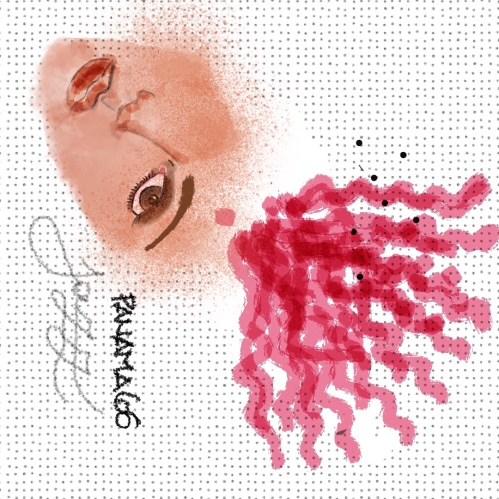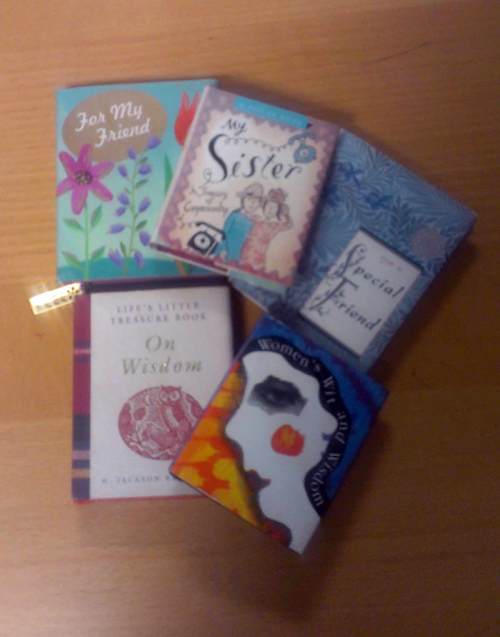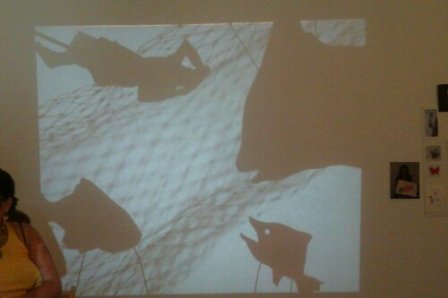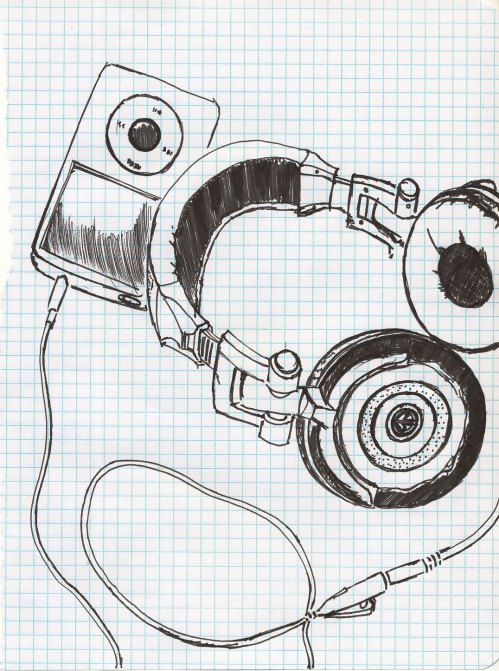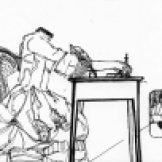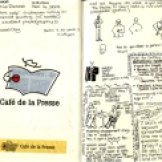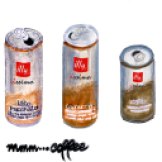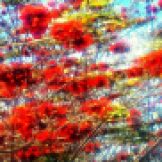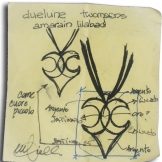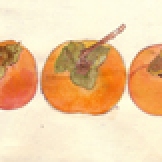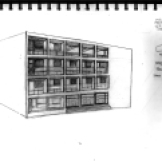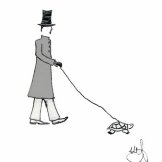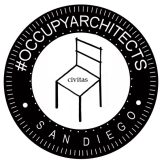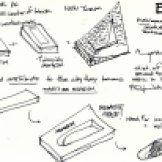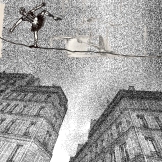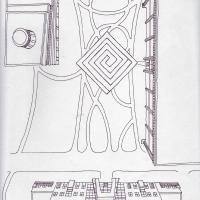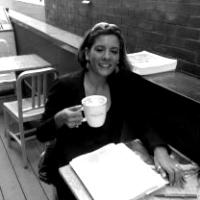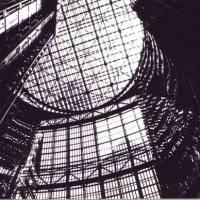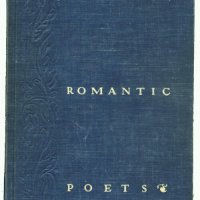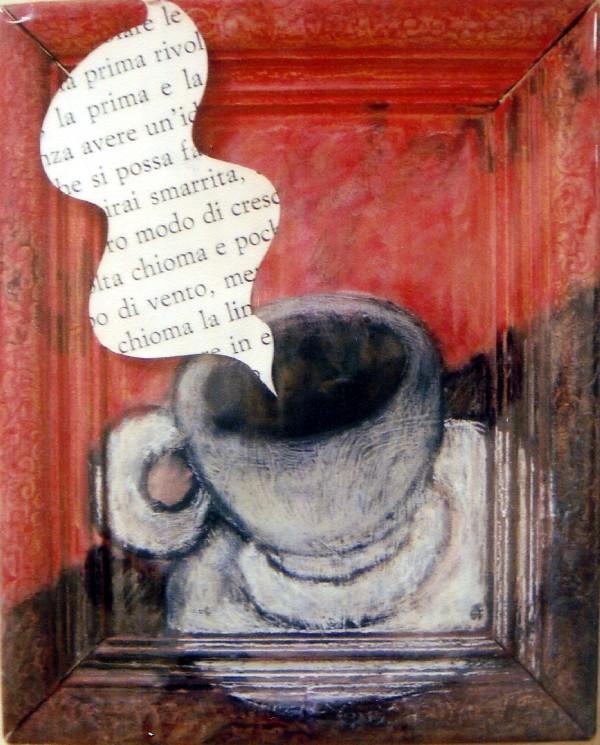
The beginning of an urban scenario collage. Oct.19, 2010.
I have been thinking and wanting to explore collages again since this summer, when I was so inspired by Hector Perez and his students’ work with SoCal Ex–but not until today I finally acted on that impulse. I have two works done and one almost complete. Two to share, and one part of a larger, more ambitious project that will have to wait for a bit.
What I love about collages is their sustainability (this below was made for prints that were to be thrown away), and their serendipity. There is a magic about collages, finding enough materials or copies of subject to bring a piece to completion, or that sudden inspiration that constitutes the ‘aha!’ factor of the collage. I am referring to old-school paper, scissors and exacto knife collages, glue-messy ones….there is nothing like digging through your collage material container and unearth and reassemble a work you didn’t even know existed or could compose. The root of the word collage is the same as the French verb ‘coller’ or to glue (a latin verb, in italian ‘incollare’). Collages are associated the the Cubist and Surrealist art movements in the last century. Picasso and George Braques are said to have coined the term. In Surrealism, we find more three-dimensional assembly/collages that resemble nonsensical machinery. There is a very fine line between sculpture made of found objects and three-dimensional ‘collages’. The key being, in my opinion, the spontaneity and uplanned process leading to the finished product, which, really, is never meant to be finished.
The exploratory aspect is the most attractive component of the collage process to me, the element of surprise, play, even psychological discovery that all contribute to give life to a work. It is quite extraordinary how when the mind lets go the art takes over (you can call it soul), and such a welcome relief from too much art that is planned and executed like a project. Collages keep the wander, let us, like sketching, solve ourselves. There is no right or wrong because the destination is never known in collages. How utterly liberating.
Yet the best collages, like the best works of art, appear undeniable in the end, as if the piece just ‘made sense’; they acquire layers of meaning with passing of time, age well, even acquire a certain patina. More than anything, they became more lovely or intense with each time your gaze falls on them. The personal fragments embedded in the collages will echo throughout the years; they will forever signify a time, place and emotion captured, crystallized, amplified.
In architecture, collages are extremely useful right-brain experimentation, and we see the Situationist using them to chart new maps of possible cities. We see collages in the 1960’s and 70’s in the works of Archigram, Superstudio, Coop Himmelblau and others. Richard Meier is a starchitect and collager. Whether or not you favor his brand of architecture I think that we all, as architects and academics, ought to have, like him, a way and time to let our innate sense of creativity develop, A time to use our hands (not the mouse, not the tip of our finger)and remember how to let our mind play and discover itself. Build something with our hands, an alternate reality, even if paper-thin. Collages are where we can dream, using pieces of reality. I suspect that regular collaging would open us (and our art/design) to inspiration, mental flexibility, maybe even brilliance.
Richard Meier’s collages complement his architecture. Unlike his architectural drawings, they are nonrepresentational; like these drawings, they record process. Like his architecture itself, they study relationships in space and seek difficult reconciliations of the opposed conditions of “found” discord and ideal order.
“A single collage is not begun and finished by itself,” says Meier. “On the contrary, works in various stages of evolution are left in notebooks and on the shelves of my studio, left sometimes for months or even years to await their own period of development. A collage is often the result of many revisions. Each must be seen as an element in my total work; they are, for me, an adjunct and a passion related to my life as an architect.”
“Meier has an eye, and a mind to use it,” the architect John Hedjuk has written. “He doesn’t create all those collages at night at home for nothing. The collage making is his midnight boxing ring. It keeps the hand and the eye trained.”
This is what I have been working on, all material from extra pages from printing this blog for my mom in Italy (I send monthly installments via mail because she refuses to make friends with computers. Mamma, when you read this, know you killed a tree ;)).




I applied an ‘antiquing’ crackling glaze to the glazed canvas so we’ll see how it develops. I dig the diagonal/chainlink texture which resulted from the juxtaposition of the pieces. The celling adds an architectural/design reading to the piece. What do you think?
Read Full Post »
